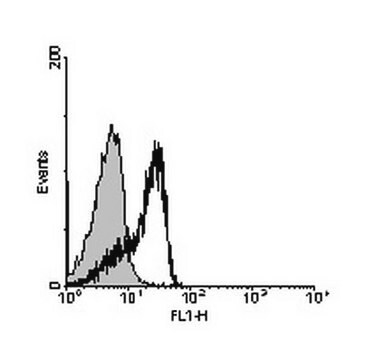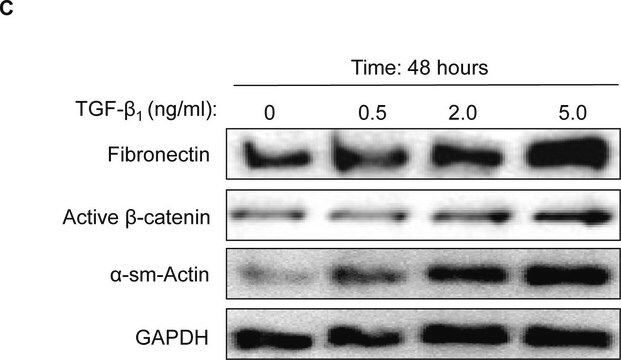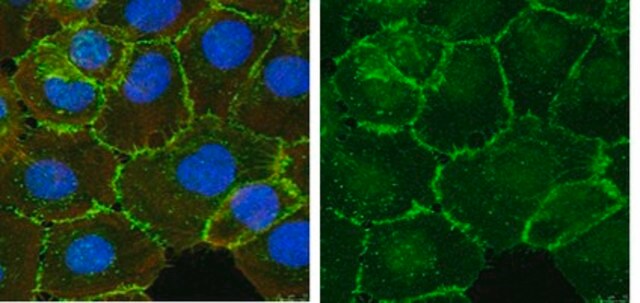MAB2081
Anti-β-Catenin Antibody, clone 5H10
clone 5H10, Chemicon®, from mouse
Synonym(s):
Anti-CTNNB, Anti-EVR7, Anti-MRD19, Anti-NEDSDV, Anti-armadillo
About This Item
Recommended Products
biological source
mouse
Quality Level
antibody form
purified immunoglobulin
antibody product type
primary antibodies
clone
5H10, monoclonal
species reactivity
rat, human
manufacturer/tradename
Chemicon®
technique(s)
immunocytochemistry: suitable
immunohistochemistry (formalin-fixed, paraffin-embedded sections): suitable
immunoprecipitation (IP): suitable
western blot: suitable
isotype
IgG1
NCBI accession no.
UniProt accession no.
shipped in
wet ice
target post-translational modification
unmodified
Gene Information
human ... CTNNB1(1499)
rat ... Ctnnb1(84353)
General description
Specificity
Immunogen
Application
Immunohistochemistry on formalin fixed paraffin embedded tissues requires light fixations and citric acid/microwave antigen recovery for staining; In brief, sections of 2μm thickness were treated after deparaffinization with 0.3% hydrogen peroxide in methanol for 30 minutes to inhibit endogenous peroxidase and washed with TBS solution (Tris-buffered saline pH 7.6). To enhance antigen retrieval, sections were microwave-pretreated in 0.01 M citrate buffer solution at 750 W for a 3 minute-cycle period repeated three times; amplified detection methods are recommended.
Immunocytochemistry: Effective for A431 and HT1080 cell lines with acetone or methanol, or light PFA fixation.
Immunoblotting
Immunoprecipitation
Optimal working dilutions must be determined by end-user.
Epigenetics & Nuclear Function
Transcription Factors
Target description
Linkage
Physical form
Storage and Stability
Analysis Note
A431 and HT1080 cell line extracts
Other Notes
Legal Information
Disclaimer
Not finding the right product?
Try our Product Selector Tool.
recommended
Storage Class Code
10 - Combustible liquids
WGK
WGK 2
Flash Point(F)
Not applicable
Flash Point(C)
Not applicable
Certificates of Analysis (COA)
Search for Certificates of Analysis (COA) by entering the products Lot/Batch Number. Lot and Batch Numbers can be found on a product’s label following the words ‘Lot’ or ‘Batch’.
Already Own This Product?
Find documentation for the products that you have recently purchased in the Document Library.
Our team of scientists has experience in all areas of research including Life Science, Material Science, Chemical Synthesis, Chromatography, Analytical and many others.
Contact Technical Service








